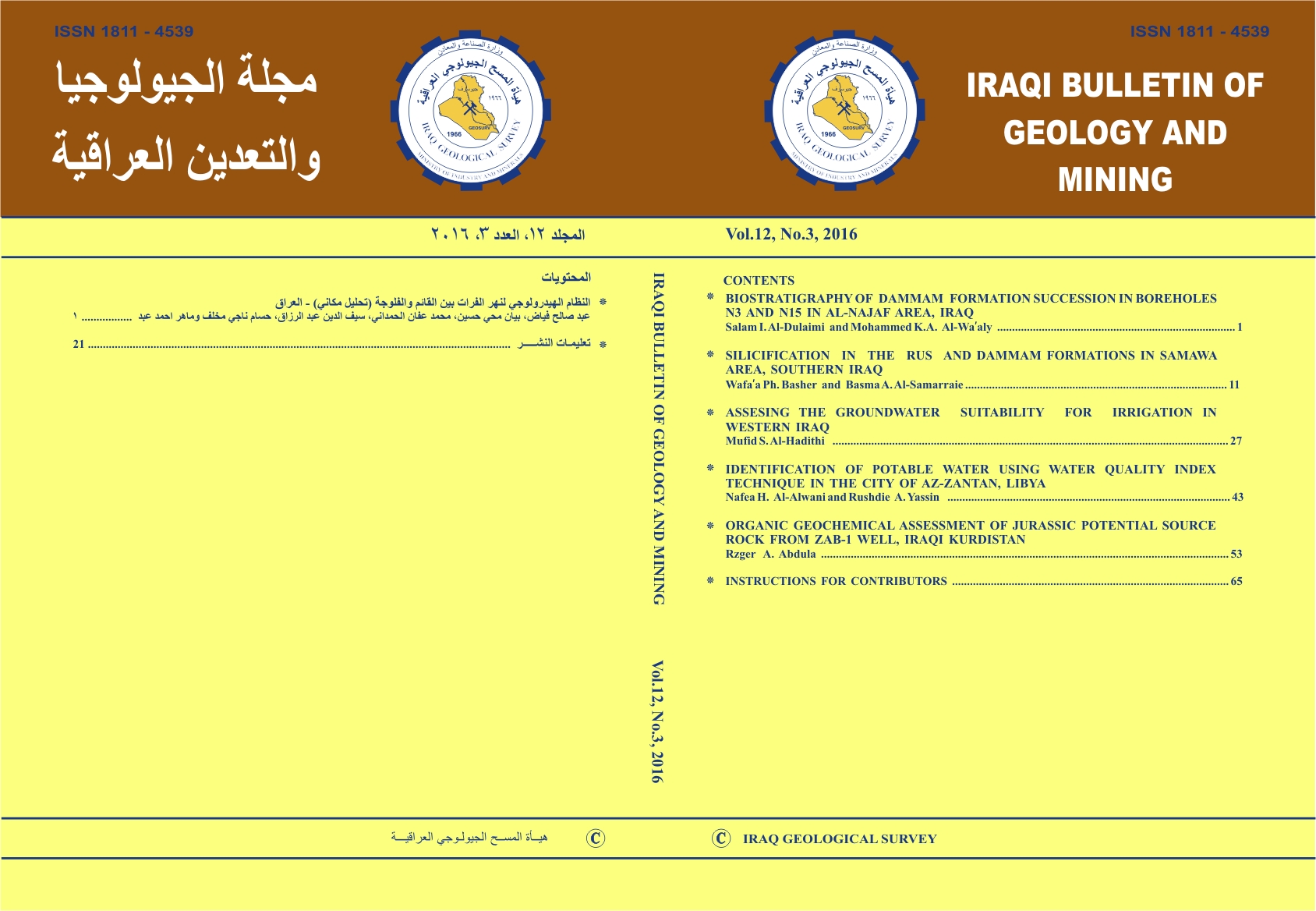Abstract
The Dammam Formation in S and SW of Iraq is an Eocene carbonate succession consisting of limestone and dolostone. Two boreholes are selected in Al-Najaf area to investigate its biostratigraphy. The biostratigraphy of Dammam Formation consists of 22 species belonging to 13 foraminiferal genera.
Two biozones are distinguished in Dammam Formation depending on the benthonic foraminiferal genus Nummulites. Those biozones are Nummulites gizehensis range zone and Alveolina sp. – Coskinolina sp. assemblage zone. According to those biozones the age of Dammam Formation is considered to be of Middle Eocene, whereas the absence of those biozones represents Lower and Upper Eocene.
Two biozones are distinguished in Dammam Formation depending on the benthonic foraminiferal genus Nummulites. Those biozones are Nummulites gizehensis range zone and Alveolina sp. – Coskinolina sp. assemblage zone. According to those biozones the age of Dammam Formation is considered to be of Middle Eocene, whereas the absence of those biozones represents Lower and Upper Eocene.
Keywords
Biostratigraphy
Biozones
Dammam Formation
Foraminifera
Iraq
Abstract
تكوين الدمام في جنوب وجنوب غرب العراق يمثل تتابع الايوسين الجيري ويتكون من الحجر الكلسي والحجرالدولومايتي, تمت دراسة الطباقية الحياتية للتكوين في بئرين في منطقة النجف. الطباقية الحياتية لتكوين الدمام تتكون من 22 نوع تعود الى 13 جنس من متحجرات الفورامنيفرا. وتم تمييز نطاقين حياتيين اعتماداً على الفورامنيفرا القاعية (Nummulites) وهذين النطاقين الحياتيين هما نطاق المدى Nummulites gizehensis وانطاق التجمعي Alveolina sp. – Coskinolina sp. وبموجب هذين النطاقين الحياتيين يكون عمر تكويين الدمام الايوسين الاوسط, بينما غياب هذين النطاقين الحياتيين يمثل الايوسين المبكر والمتأخر.
